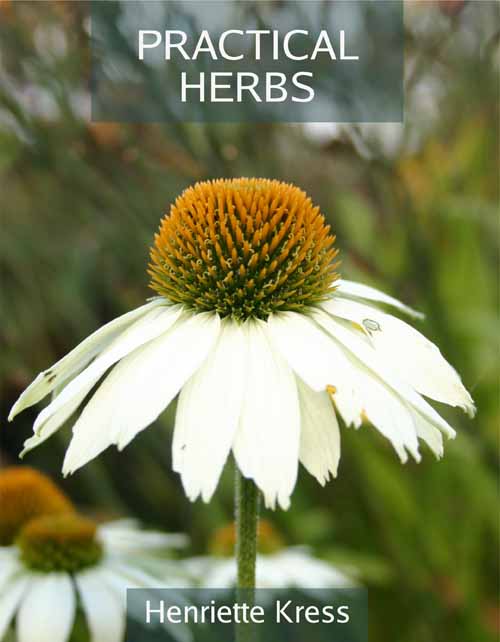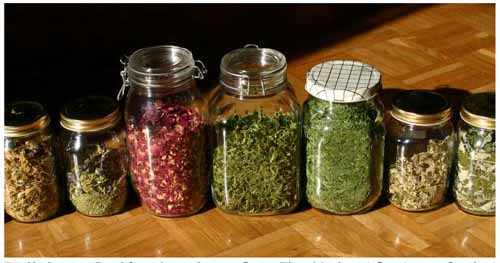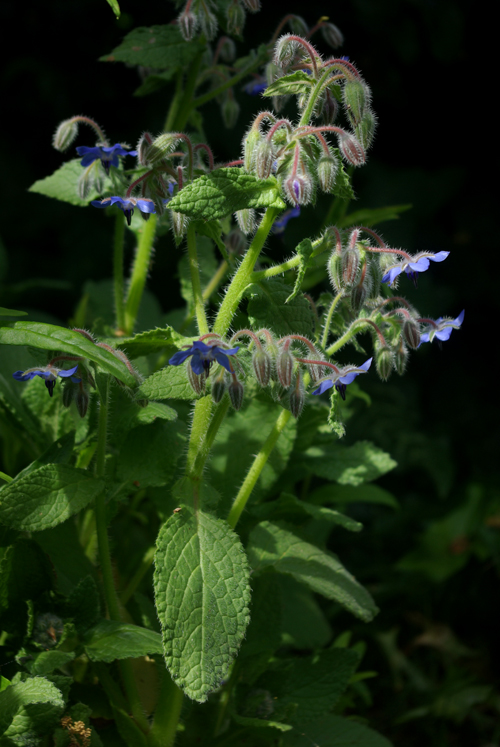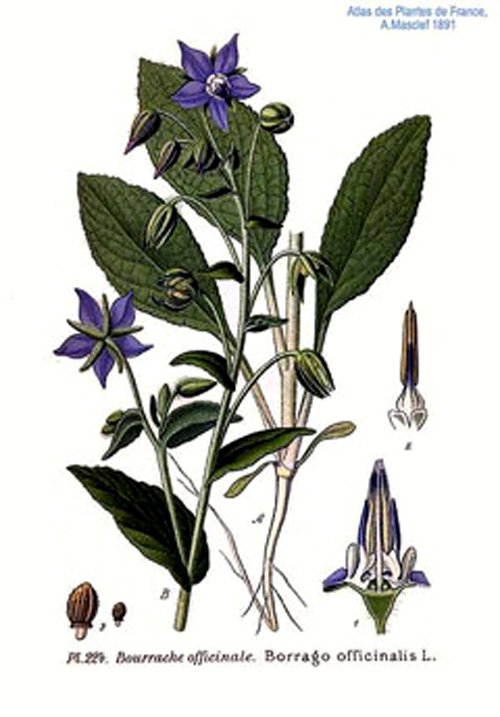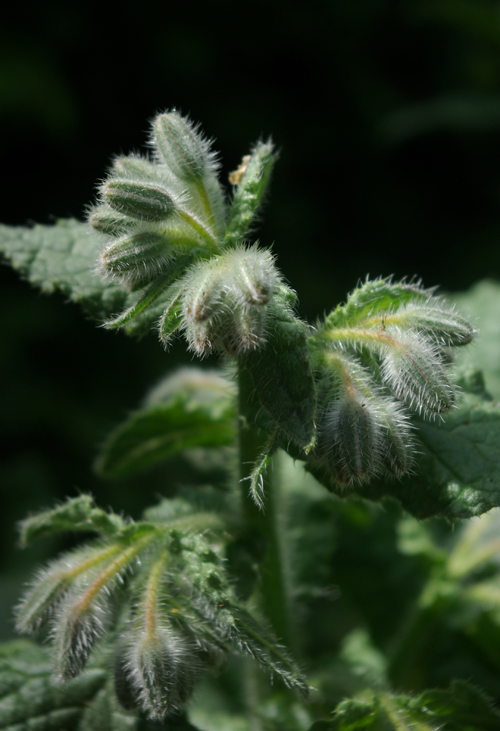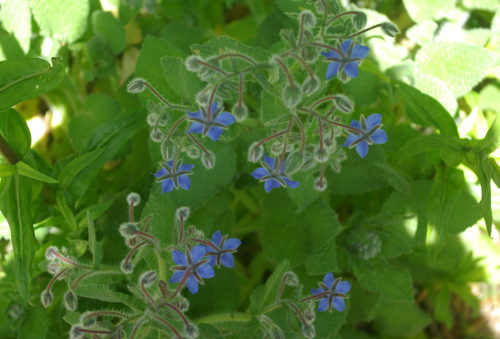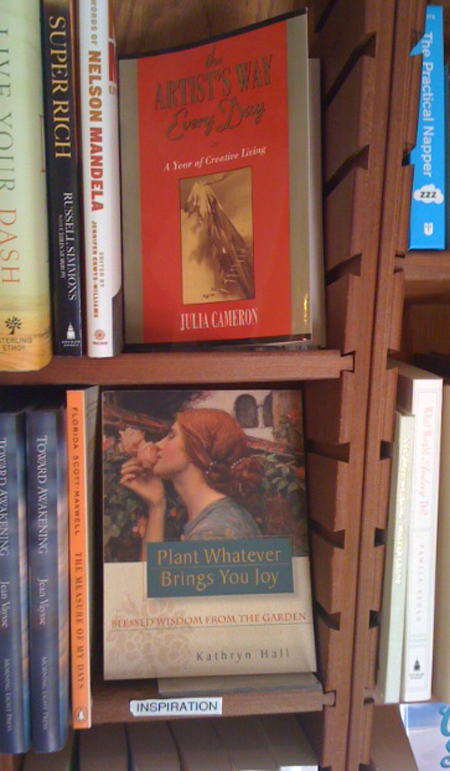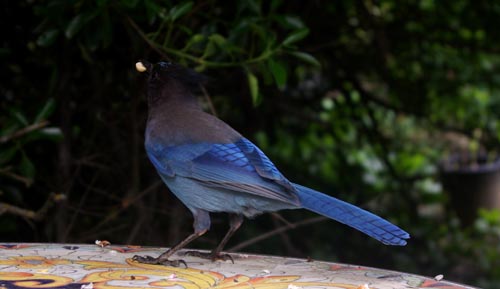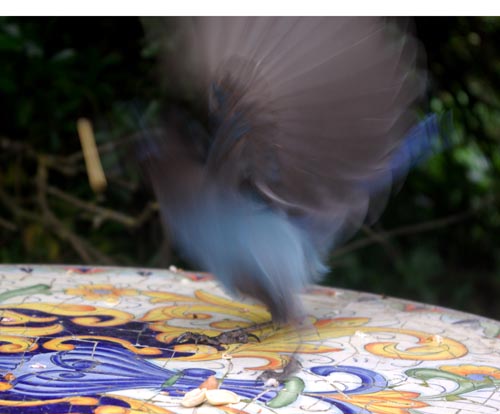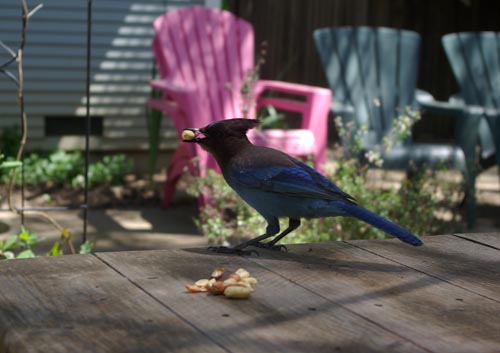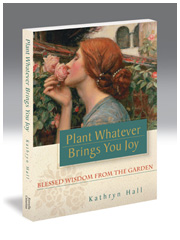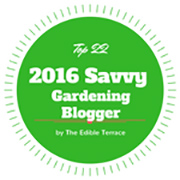One of the marvelous advantages of long-term blogging is that one is constantly making new and interesting discoveries. One of my best and latest is Finnish herbalist Henriette Kress’s new book Practical Herbs. Indeed, scanning the Table of Contents I found myself so excited because, honestly, everything sounded like something I wanted to know more about! Examples include Picking herbs, Drying your herbs, Making and using herbal teas (including info on herbal baths and a footbath!), Herbal salves, Tinctures, and Herbal vinegars and Herbal syrups. One page and I was hooked! Yes, yes! I want to know it all! As someone who has collected a lot of herb books over the years–and even promoted a German one as a publicist years ago–I’ve seen my share of Herb Books. I knew immediately that Henriette’s book was going to take a special place on my herbal book shelf within minutes of thumbing through. It rings of truth, of serious study, of years of experience, all packaged in the simplest way, but chockfull of excellent information. This book is as appropriate for a beginner as it is for those with years of herbal exploration under their belts. My copy is going next to Back to Eden, Culpepper and Material Medica. Following the in depth practicum Henriette showcases a good list of identified herbs, replete with their uses. Most will be familiar to gardeners, though their healing properties might not be as well known. They include:
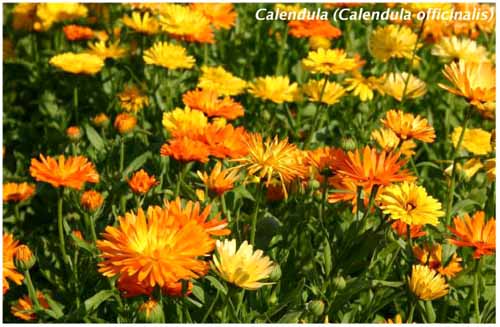
Calendula (Calendula officinalis)
Most everyone is familiar with calendula (sometimes called pot marigold), and, increasingly, and happily, it is showing up more frequently in our lotions and salves which we buy commercially, and with good reason. Calendula is good for the skin. I always keep a jar of calendula salve on hand not only for myself, but I now include an extra jar for my animals (cats and dogs). It’s good for their skin problems, too. Says Henriette, “Used externally, calendula speeds healing of wounds on the skin and mucous membranes and reduces the formation of scar tissue.” She goes on extensively to address other uses, illuminating how make tea, tincture, and salve. Handy!
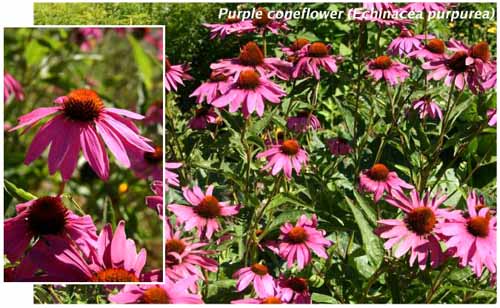
Coneflower (Echinacea purpurea)
By now most of us are well familiar with using echinacea to boost our immune systems when that is called for. Henriette doesn’t limit her coverage of only purple coneflower, but of other coneflowers as well, even extending to look-alikes! She addresses picking and processing, effects and uses, including tincture and tea. “You can use any Echinacea species as medicine: they all work. you can use roots or the aboveground parts: they all work. You can use them as teas, tinctures, powders, chewed, and as compresses. They all work.”
Presonal note to newbies: research any herb you are not familiar with extensively prior to use so you know what you are doing and feel confident in that. Herbs should not be casually experimented with, as you might well imagine. However, fear should not be the stopping point. Caution should be present in your practice, but I strongly recommend exploration. I don’t know what I’d do without healing herbs. What a blessing!

Dandelion (Taraxacum officinale)
It did my heart good to see this dandelion growing unrestrained in Henriette’s garden! I allow myself one in the front lawn. I’m sure its taproot goes all the way to China by now. I regularly pick the newest leaves and chew them, knowing I just did myself a big favor. Few of us have gardens that allow unbridled growing, but if I’m ever in a situation to do that, I will! Apparently Henriette is and does! “In my garden, dandelion volunteers everywhere.” Lucky her. 🙂 You might be aware that dandelion aides digestion, due to its bitter nature. Sadly, we are often lacking the much needed bitters in our diet. Dandelion helps. “The best way to take dandelion is to eat a matchstick-sized piece of the dried or fresh root three times a day, and to eat dandelion leaf salads three to seven times a week,” says Henriette. Granted, it’s an acquired taste, and one that will serve you well over time. Please note Henriette’s warning to not take dandelion if you have low blood pressure.
And, get this!:
Short-lived Tattoos: You can use the white “milk” of the leaf, flower stalk, and root to make temporary tattoos. Try it on the inside of your arm. Your artwork won’t be visible right away, though. Stay out of the shower, and by next morning your now-brown “tattoo” will be there for all to see! The tattoo will last a few days, but you can wash it off whenever you like.
Many gardeners will be well familiar with having a collection of dried herbs they have grown and collected from their gardens. Some gardeners will be more focused on the fresh fruits and vegetables they grow to eat. Practical Herbs by Henriette Kress is a wonderful introduction to expand one’s garden and kitchen repertoire, and can be purchased on Amazon in the UK, or by going here. US residents might opt for the pdf. I love this book! Practical Herbs is highly recommended!
Love and garden blessings,
Kathryn xoxo
Book News: Strolled past Mendocino Book Company recently and was so thrilled to see Plant Whatever Brings You Joy in the window!
Visit the trailer on YouTube for Plant Whatever Brings You Joy!
Posted on May 21st, 2012 by Kathryn
Filed under: Plants | 6 Comments »

